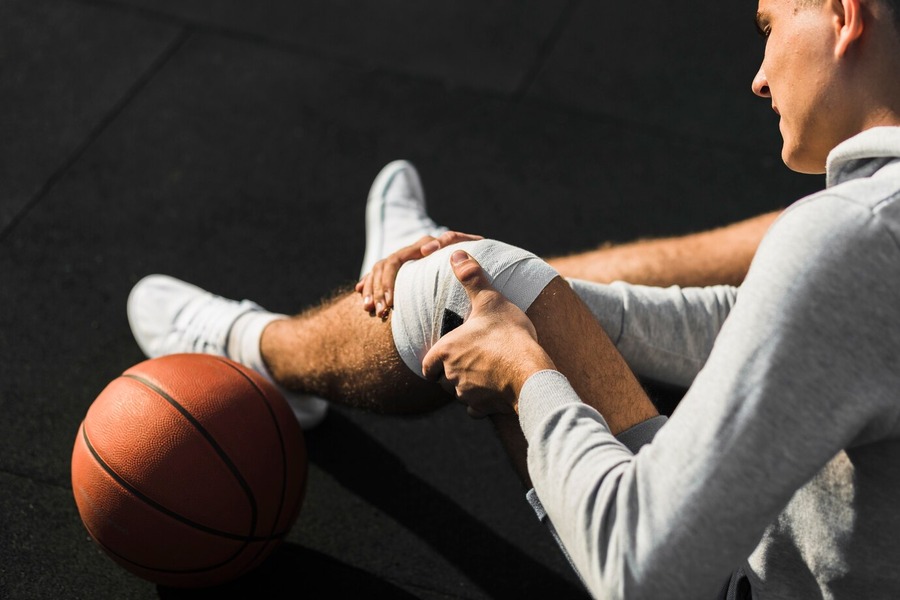Ligament tears are among the most common and impactful injuries in sports medicine, affecting athletes and active individuals alike. These injuries can significantly disrupt mobility, performance, and daily life, making prompt diagnosis and effective treatment essential for a full recovery. Sports medicine specialists are uniquely equipped to manage ligament tears, guiding patients from initial injury through rehabilitation and return to activity.
What Are Ligament Tears?
Ligaments are strong, flexible bands of tissue that connect bones and stabilize joints. When these tissues are overstretched or subjected to excessive force—such as during sudden stops, twists, or impacts in sports—they can partially or completely tear. Ligament tears are most frequently seen in the knee (ACL, MCL, PCL, LCL), ankle, shoulder, and wrist, but can occur in any joint.
Causes and Risk Factors
Ligament tears often result from:
- Sports Injuries: Activities requiring rapid direction changes, jumping, or direct collisions (e.g., soccer, basketball, football, skiing).
- Accidents: Falls, car accidents, or awkward landings can strain or tear ligaments.
- Repetitive Movement: Overuse and repetitive stress weaken ligaments over time.
- Improper Technique or Weak Muscles: Poor form or inadequate muscle support increases injury risk.
Symptoms of Ligament Tears
Common signs and symptoms include:
- Sudden, sharp pain at the time of injury
- Swelling and bruising, often within hours
- Instability or a sensation that the joint may “give out”
- Limited range of motion and difficulty bearing weight
- A popping sound or sensation at the moment of injury
Severity Grades of Ligament Tears
Ligament injuries are classified into three grades:
| Grade | Description | Symptoms | Recovery Time |
| 1 | Mild (overstretched, no tear) | Mild pain, swelling, stable joint | Days to weeks |
| 2 | Moderate (partial tear) | Moderate pain, swelling, some instability | Several weeks, may need physical therapy |
| 3 | Severe (complete tear/rupture) | Severe pain, swelling, joint instability | Months, often requires surgery and rehab |
Diagnosis
Diagnosis involves a physical exam, patient history, and often imaging tests such as MRI or X-rays to assess the extent of the injury and rule out associated bone damage.
Treatment Options in Sports Medicine
Treatment depends on the severity and location of the tear:
- Grade 1 (Mild):
- R.I.C.E. (Rest, Ice, Compression, Elevation)
- Pain relievers (NSAIDs)
- Bracing or taping for support
- Grade 2 (Moderate):
- R.I.C.E. and medications
- Physical therapy to restore strength, flexibility, and joint stability
- Gradual return to activity
- Grade 3 (Severe):
- Surgical repair or reconstruction, especially for athletes or complete ruptures (e.g., ACL reconstruction)
- Post-surgical rehabilitation to regain full function and prevent re-injury
Sports medicine teams provide individualized rehabilitation programs, focusing on restoring mobility, endurance, and confidence for a safe return to sports or daily activities.
Conclusion
Ligament tears can be serious and life-altering if not managed properly. Sports medicine specialists offer comprehensive care—from accurate diagnosis and advanced treatment to personalized rehabilitation—helping patients recover fully and safely return to their favorite activities.
Related FAQs
1. How do I know if I have a ligament tear or just a sprain?
Ligament tears often cause sharp pain, swelling, bruising, and joint instability. Severe tears may produce a popping sound and make it difficult to bear weight. A sports medicine specialist can provide a precise diagnosis.
2. Can a ligament tear heal without surgery?
Mild and some moderate tears (Grades 1 and 2) often heal with rest, bracing, and physical therapy. Severe tears (Grade 3) may require surgical repair, especially in athletes or if the joint is unstable.
3. How long does recovery take after a ligament tear?
Recovery varies: mild tears may heal in weeks, while severe tears—especially those needing surgery—can take several months and require extensive rehabilitation.
4. What are the most common sports causing ligament tears?
Soccer, basketball, football, skiing, and other sports involving sudden stops, pivots, or collisions are common culprits.
5. How can ligament tears be prevented?
Proper warm-up, strength training, good technique, and avoiding overuse are key strategies for reducing the risk of ligament injuries.
Your partner in sports medicine, offering comprehensive care to restore your active lifestyle after ligament injuries. Visit https://orthoxpress.co/ or call us at (214) 949-8918 to schedule an appointment. Walk-ins & new appointments are available.

